
Projects
Projekte
-
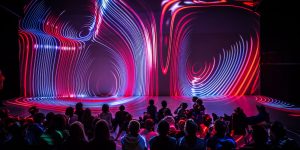
Immersify
Sie lassen uns die Welt um uns herum beinahe vergessen: Virtual-Reality-Anwendungen lassen uns tief in Bilder und Videos eintauchen und versprechen interaktive Erlebnisse. Um immersive Medien von einem Nischenphänomen zu einer weit verbreiteten Praxis auf dem Verbrauchermarkt zu führen, hat das dreijährige, von der EU geförderte Projekt Immersify mit fünf europäischen Partnern, darunter dem Ars…
-
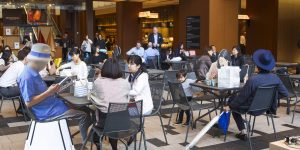
School of the Future Festival 2017: Out of Control
Mit der ersten Ausgabe der School of the Future bringt das Ars Electronica Futurelab Diskussionen über Technologie, Gesellschaft und Kunst mitten ins Herz von Tokio. Das im urbanen Komplex Tokyo Midtown stattfindet, veranstaltete Format umfasst eine Ausstellung, Gespräche, Vorträge und Workshops zu potentiellen Themen der Zukunft.
-

insight | out
insight | out, a work of media art by the Ars Electronica Futurelab, is a portrait of Oberbank AG Linz rendered on a fragmented frieze made up of eight video screens. The medium itself thus evokes the multiplicity of influences that flow into this portrait – the values that this long-established financial institution represents, the…
-
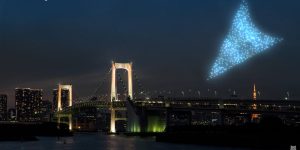
Sky Compass
A collaboration between Japanese telecommunications giant NTT and the Ars Electronica Futurelab, Sky Compass is the first step towards a vision of employing drones (or UAVs, Unmanned Aerial Vehicles) in public signage, guidance and the facilitation of traffic.
-
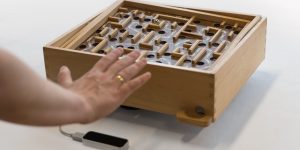
MANUACT
How can gesture research be presented so that it is comprehensible by everyone? How do you identify natural gestures for specific applications? What are the origins of such gestures, and how can they best be used in future interfaces? The Ars Electronica Futurelab has been collaborating with Chemnitz University of Technology to get to the…
-

Tumcreate
Die immersive, virtuelle und interaktive 3D-Umgebung des Deep Space 8K wird Teil eines gigantischen, skalierbaren Zukunftsprojekts: Als VR-Forschungs- und Entwicklungslabor soll die internationale Forschungsplattform TUMCREATE eindrucksvolle Möglichkeiten der Präsentation, Kollaboration und Simulation für die Entwicklung eines neuen Infrastruktur- und Mobilitätskonzepts für die Megastadt Singapur bieten.
-
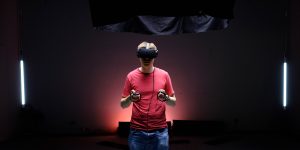
Homo Digitalis
How long will we actually still be human? Will we all, at some point, have virtual friends, enjoy sex with robots more than making love to a real person, and hack our own body? Homo Digitalis is a web series about the ultimate future question: What is the digital revolution doing with us human beings?…
-

Die virtuelle Rekonstruktion der Synagoge in Linz
Von Nazi-Sympathisant*innen im November 1938 zerstört, wurde die Linzer Synagoge 78 Jahre später zu neuem Leben erweckt und der Öffentlichkeit zugänglich gemacht: als virtuelle Rekonstruktion des Architekturstudenten René Mathe in Zusammenarbeit mit dem Jüdischen Museum Wien und dem Ars Electronica Futurelab.
-

ORI* – On the Aesthetics of Folding and Technology
This research examines how new design approaches that utilise advances in scientific origami, computation, robotics, and material experimentation, can influence the functional aesthetic of the art of oribotics. Situated in the context of contemporary electro/mechanical artworks and objects, and joining the fields of origami and robotics, oribotics is influenced by notions of folding scientifically and…
-
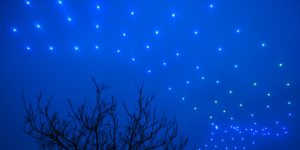
Drone100: Spaxels over Linz
Partnering with Intel ™ on the Drone 100 project paid off tremendously for the Spaxels crew in terms of technical impetus and media coverage. Following this momentous achievement and with the next Ars Electronica Festival coming up, it was high time to demonstrate just how far this undertaking had come at the very spot where…
-

SAP Data Kitchen
The Ars Electronica Futurelab assisted SAP in designing a meeting place for innovative start-ups based on the model of the Hana Café in Palo Alto. The so-called Data Space, which would take shape at Rosenthalerstraße 38 in the center of Berlin, features two storeys of which the first floor is composed of an event space…
-
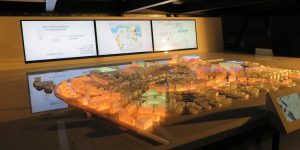
Aspern Skizzentisch
In the role of a scientific partner of the Technical Museum Vienna, the Ars Electronica Futurelab is advisory and realizes projects within the scope of an exhibition-series “Weiter_Gedacht_” (one step further). In the case of the first of three events between 2016 and 2021, the title “Die Zukunft der Stadt” (The urban future) called for…